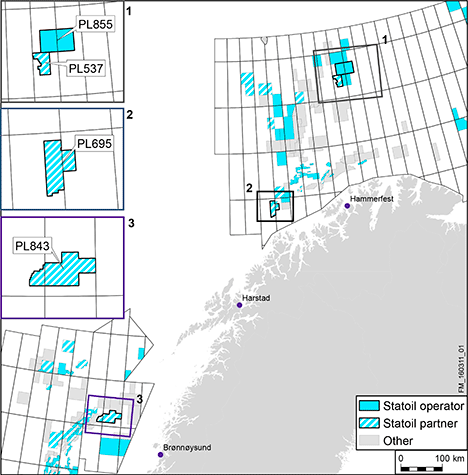Statoil Buys Tullow Stakes off Norway
Statoil has agreed to increase its stakes in four Norwegian licences, including the Wisting discovery in the Barents Sea, in all cases from UK-based Tullow Oil. Neither company indicated the price of the transaction, announced September 6.
Last month Tullow said it had decided to sell its exploration and development portfolio in Norway to prioritise on Africa and South America and reduce its cost base. Following the deal, it said: "We have stakes in a further 30 [Norwegian] licences which we are seeking to dispose of."
The deal makes Statoil the largest equity holder in the Wisting discovery, so far the only big discovery in the Hoop area of the Barents Sea.
If the deal goes ahead, Austrian OMV will remain operator of PL537 (Wisting) with 25%, but Statoil’s equity will increase from 15% to 35%, while Tullow will exit. Norwegian state Petoro and Japan’s Idemitsu each have 20%. OMV said in April it believes Wisting area’s potential to be 200-500mn boe, while the offshore regulator Norwegian Petroleum Directorate estimates that Wisting has 241mn barrels oil equivalent (boe) of recoverable resources, mainly oil but with some associated gas.

Map showing the four Norwegian licences where Statoil is increasing its stake (Map credit: Statoil)
Statoil will also acquire from Tullow a 20% interest in PL855 (Hoop) and 40% in PL695 (Tromsoflaket), both also in the Barents Sea, plus 20% in Norwegian Sea licence PL843 – taking Statoil’s interests respectively to 55%, to 40% (from nothing) and to 40%. Statoil said this would give it access to interesting exploration prospects that will be matured for possible drilling in 2018.
In other news, UK-based Serica Energy said September 6 that Lomond platform operator Shell had advised that the issues concerning the re-commissioning of the Lomond export facilities have been resolved and Erskine oil and gas production resumed on 29 August. This follows the work reported in July to clear a blockage in the Lomond to Everest condensate export line and the summer maintenance programme on the Lomond platform.
Since restarting, production has averaged over 3,000 boe/day net to Serica, with a peak rate of over 5,000 boe on one day demonstrating the strong capability of the reservoir. Because of restrictions on the Forties Pipeline System, Serica expects its net share of Erskine production for the rest of the year to be 2,500 to 3,000 boe/d. Serica has an 18% interest in Erskine, while Chevron is operator with 50%, and Shell (BG) has 32%. Gas is piped to Teesside, with utility SSE buying 60% of it while 40% is sold on the spot market.
Mark Smedley


